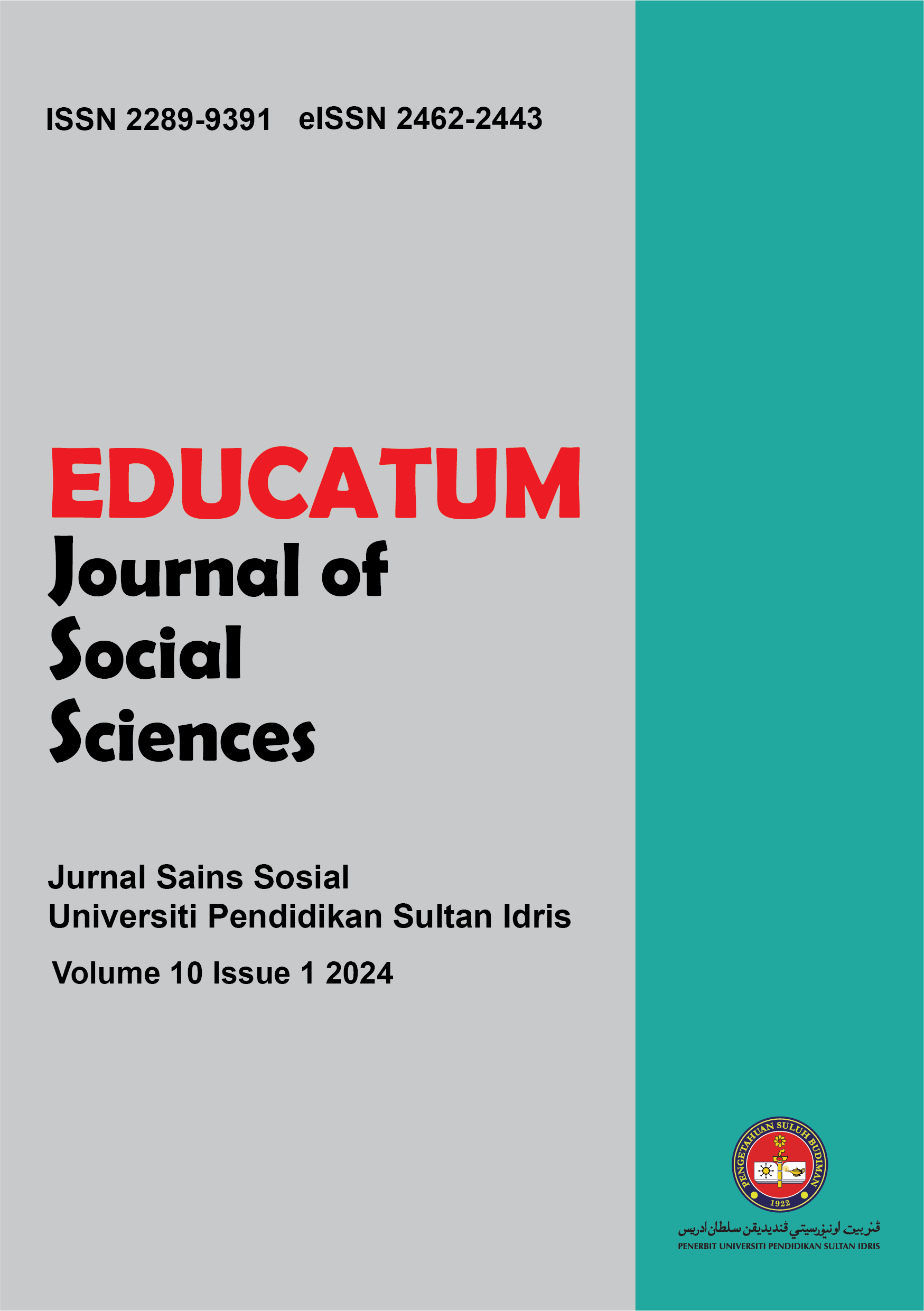Development of nursery rhyme module in essay writing for level two students in primary school: A needs analysis
DOI:
https://doi.org/10.37134/ejoss.vol10.1.10.2024Keywords:
Nursery rhymes, module, essay writing, teaching English, fun learningAbstract
This study is a needs analysis study in the first phase of the design and development approach (DDR) founded by Richey and Klein (2007). The purpose of this needs analysis study is to identify the need for the development of nursery rhyme module in essay writing or level two students in primary school. The study was conducted quantitatively using the survey method. The first phase involves needs analysis using a questionnaire conducted on 285 teachers in 5 states to see the needs of modules in teaching and learning sessions. The reliability of the questionnaire was relatively high which was based on Cronbach Alpha a = 0.98. The questionnaires consist of 8 sections approximately 72 questions. The survey data were analysed using Statistical Package for the Social Sciences (SPSS) by mean value. The results of pilot test were Part A(M=3.809), Part B(M=3.766), Part C(M=3.945), Part D (M= 4.000), Part E(M=4.090), Part F(M=4.272), Part G(M=4.187) and H(M=4.6000). The findings of this study show that there is a need for researchers to develop a module. It is hoped that the nursery rhyme module can be used by teachers to increase fun learning for students to write in English.
Downloads
References
Al-Ani, W. (2017): Alternative education needs in Oman: Accommodating learning diversity and meeting market demand. International Journal of Adolescence and Youth. 22(3), 1-15. doi:10.1080/02673843.2016.1179204
Al-Khasawneh, F.M.S. (2010) Writing for Academic Purposes: Problems Faced by ArabPostgraduate Students of the College of Business, UUM. ESP World, 9, 123.http://www.esp-world.infor
Barkaoui, Khalid (2007) Revision in Second Language Writing: What Teachers Need to Know. TESL Canada Journal. Vol. 25, No1, Winter 2007
Belet Boyaci, S. D., & Güner, M. (2018). The impact of authentic material use on development of the reading comprehension, writing skills and motivation in language course. International Journal of Instruction, 11(2), 351-368. doi:10.12973/iji.2018.11224a
Bodden, V. (2010). Poetry basics: Nursery rhymes. Mankato, MN: Creative Education. Blondel, M., & Miller, C. (2001). Movement and rhythm in nursery rhymes in LSF. Sign Language Studies, 2, 24-61.
Chamba, M., & Gavilanes, C. (2018). Authentic audio-visual material in the development of oral fluency in university intermediate English students. Literatura y Lingüística, 39, 199 223. doi:10.29344/0717621x.39.2011.
Charanjit Kaur Swaran Singh, Rhashvinder Kaur Ambar Singh, Tarsame Singh Masa Singh, Nor Azmi Mostafa1 & Tunku Mohani Tunku Mohtar1(2018) Developing a Higher Order Thinking Skills Module for Weak ESL Learners.
Cullinan, B. E., & Galda, L. (2010). Literature and the Child (4th ed.). New York: Harcourt Brace. [3] Temple, C., Martinez, M., & Yokota, J. (2011). Children’s Books in Children’sHhands:An Introduction to their Literature (4thed.). New York: Pearson.
Grabe, W., & Kaplan, R. B. (2014). Theory and practice of writing: An applied linguistic perspective. Routledge.
Guay, F., Chanal, J., Ratelle, C. F., Marsh, H. W., Larose, S., & Boivin, M. (2010). Intrinsic,identified, and controlled types of motivation for school subjects in young elementary school children. British Journal of Educational Psychology, 80(4), 711–735.
Hall, B.H., Lotti, F. and Mairesse, J. (2011), Evidence on the Impact of R&D and ICT Investment on Innovation and Productivity in Italian Firms, revised version of paper presented at the Concord 2010 Conference, Seville, Spain, March
Hassan,Isyaku & Ayuni Madarina, A.R (2021). Development of English Writing Skills through Blended Learning among ESL Learners in Malaysia. Arab World English Journal (AWEJ) Special Issue on CALL Number 7. July 2021 Pp. 377-389 DOI: https://dx.doi.org/10.24093/awej/call7.26
Johnson, M. M. (2013). The Relationship Between Spelling Ability and Reading Fluency and Comprehension in Elementary students (Doctoral dissertation). Northern Michigan University, Marquette.
Mohd Tahir, M. H.1 & Tunku Mohtar, T. M. (2016). The effectiveness of using vocabulary exercises to teach vocabulary to ESL/EFL learners Article · December 2016
Nahari, A., Alfadda, H. (2016). From memorising to visualising: The Effect of Using Visualisation Strategies to Improve Students’ Spelling Skills (Vol. 9, No.6). Toronto, Canada: Canadian Center of Science and Education.
Tajularipin Sulaiman, Vickneswary Muniyan, Diwiyah Madhvan, Raidah Hasan and Suzieleez Syrene Abdul Rahim (2017) Implementation of Higher Order Thinking Skills in Teaching Of cience: A Case Study in Malaysia International Research Journal of Education and Sciences (IRJES) Vol. 1 Issue 1, 2017 eISSN
Temple, C., Martinez, M., & Yokota, J. (2011). Children’s Books in Children’s Hands: An introduction to their literature (4th ed.). New York: Pearson.
Uusen, A. (2009). Changing TeachersAttitude Towards Writing, Teaching Of Writing And Assessment Of Writing. Problems of Education in the 21st Century, 10, 100.
York, J. (2011). Music and MEXT: How songs can help primary school English teachers teach and their students learn. The Language Teacher, 6, 250-261
Yüce, E., & Aksu Ataç, B. (2019). Peer editing as a way of developing ELT students’ writing skills: An action research. Journal of Language and Linguistic Studies, 15(4), 226-1235. doi:10.17263/jlls.668377
Zipes, J.(2005). Fairy Tales and the Art of Subversion. Second edition. New York, Routledge.
Downloads
Published
Issue
Section
License
Copyright (c) 2024 Zaleha Zahari, Norazilawati Abdullah, Mazarul Hasan Mohamad Hanapi

This work is licensed under a Creative Commons Attribution-NonCommercial-ShareAlike 4.0 International License.





